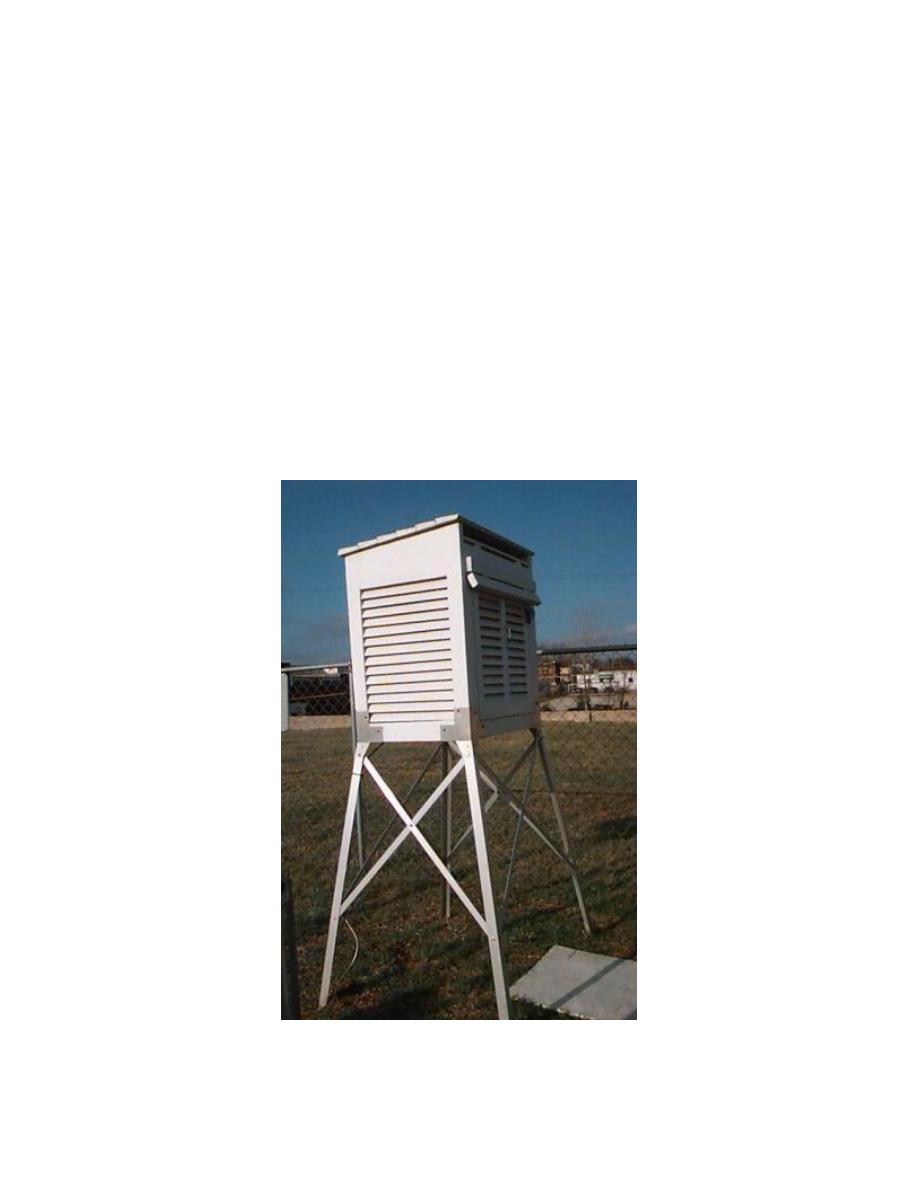
1
Unit 2
WEATHER AND PRECIPITATION
Temperature
In order to measure air temperature, thermometer must be placed where
air circulation is relatively unobstructed, and yet they must be protected
from the direct rays of the sun and from precipitation. Thermometers are
placed in white, louvered, wooden instrument shelters.

2
Wind
It is air in motion; it is a very influential factor where moisture and heat
are transferred to and from air.
The wind adopting the thermal and moisture conditions of the surface of
contact.
The wind has speed and direction, it measured by instrument called
anemometer.
The variation of velocity of wind taken as a logarithmic form profile.
*
0
1
ln
V
Z
V
K
Z
V
: mean wind speed at height z
*
V
:friction velocity, it is different according to kind of surface
K: Von-Karaman constant use =0.4
Z: any height
0
Z
: standard height
use table (2-2) to find
0
Z
and
*
V
also use table (2-3) for Z
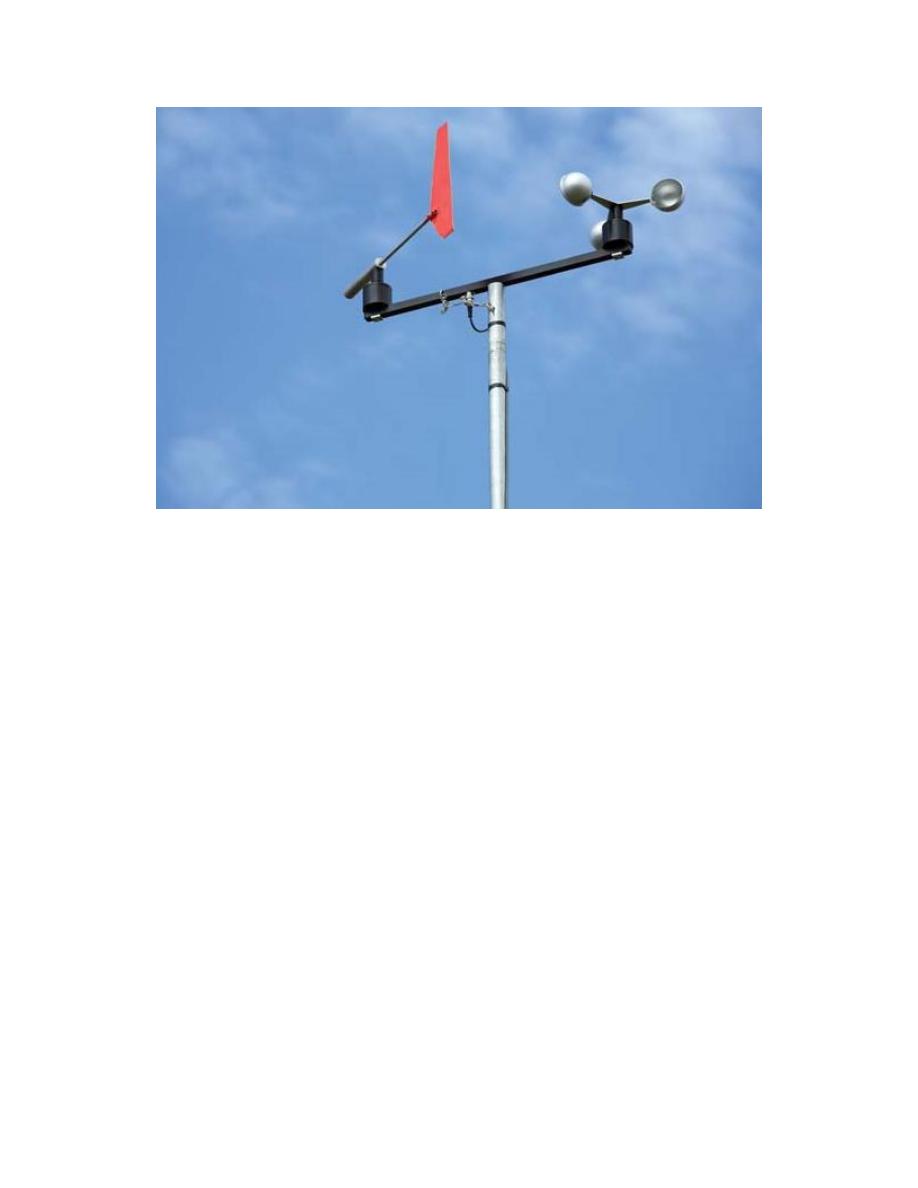
3
Precipitation
Precipitation is the primary mechanism for transporting water from the
atmosphere to the surface of the earth. There are several forms of
precipitation:
Forms of Precipitation
Drizzle
— a light steady rain in fine drops (0.5 mm) and intensity <1
mm/hr
Rain
— the condensed water vapor of the atmosphere falling in drops
(>0.5 mm, maximum size—6 mm) from the clouds.

4
Glaze
— freezing of drizzle or rain when they come in contact with cold
objects.
Sleet
— frozen rain drops while falling through air at subfreezing
temperature.
Snow
— ice crystals resulting from sublimation (i.e., water vapor
condenses to ice)
Snow flakes
— ice crystals fused together.
Hail
— small lumps of ice (>5 mm in diameter) formed by alternate
freezing and melting, when they are carried up and down in highly
turbulent air currents.
Dew
— moisture condensed from the atmosphere in small drops upon
cool surfaces.
Frost
— a feathery deposit of ice formed on the ground or on the
surface of exposed objects by dew or water vapour that has frozen
Fog
— a thin cloud of varying size formed at the surface of the earth by
condensation of atmospheric vapour (interfering with visibility)
Mist
— a very thin fog
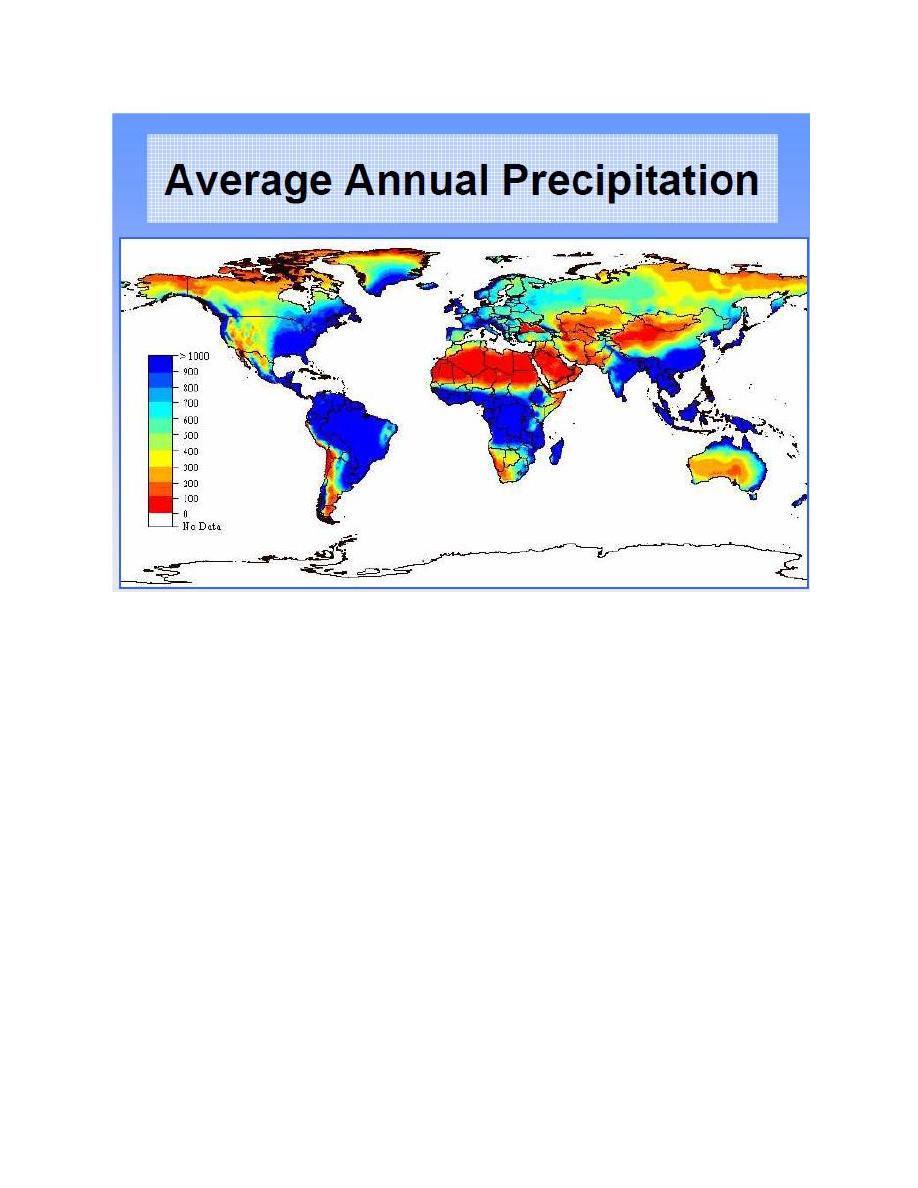
5
Characteristics of Precipitation
• Duration - Measured in units of minutes or hours
• Depth - Measured in units of mm or inches
• Rate Intensity - Measured in units of mm/hr or inch/hr
• Storm Frequency– Describe the probability of occurrence

6
General principle of precipitation formation
1. Warm moist air rises (warm air is lighter than cold air) by one of three
lifting mechanisms (convective, cyclonic, and orographic)
2. The moist air is cooled adiabatically, i.e. no heat exchange with
environment.
3. The relative humidity increases (saturation vapor pressure decreases
with temperature).
4. When the dew point temperature is reached, condensation begins.
Types of Precipitation
1. Convective Precipitation
– Due to intense heating of air at the ground, which leads to expansion
and vertical rise of air.
– Movement of warmer moisture laden air up through cooler levels
which results in condensation and then precipitation.

7
– Air heated up at the interface with the ground (showers and
thunderstorms).
•Form - rain, hail
•High Intensity, may exceed 40 mm/hr
•Duration - short (minutes to hours)
•Scale - ~1-10s km
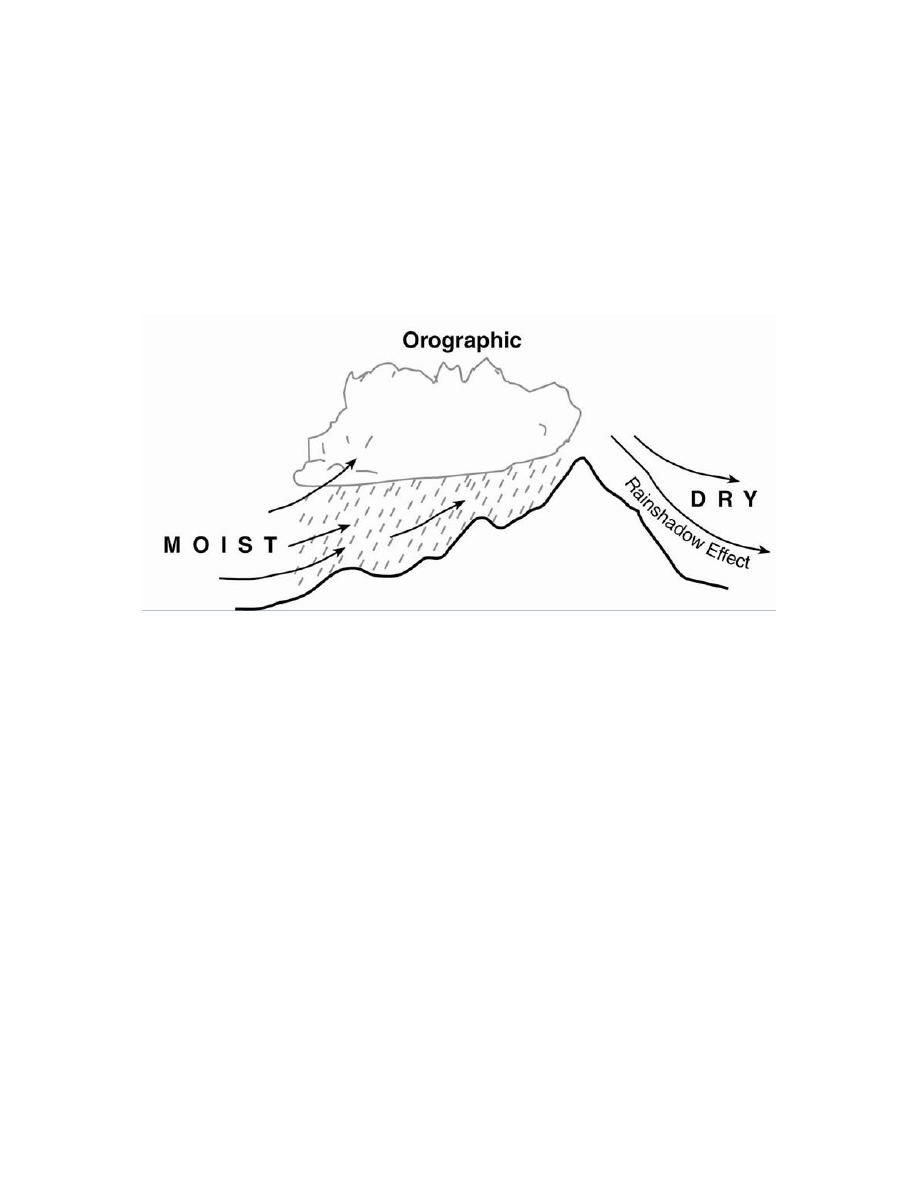
8
2. Orographic Precipitation
– Results from the mechanical lifting of moist horizontal air currents
over natural barriers such as mountain ranges.
•Form - rain or snow
•Intensity - low to moderate ~10 mm/h; high intensities when sharp rise
of the mountains
•Duration - long (hours to days); shorter if additional convection
•Scale - >10-100 km
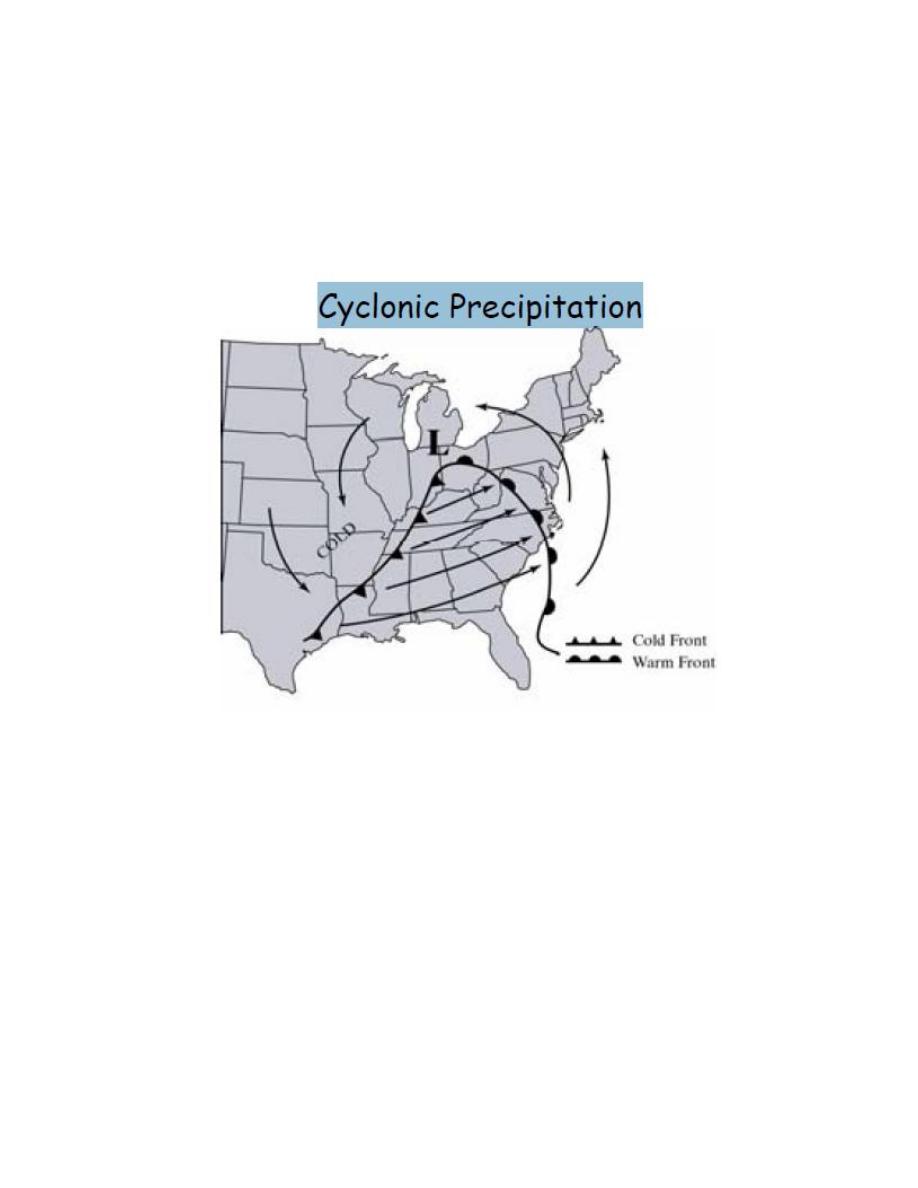
9
3. Cyclonic Precipitation (tropical depressions or hurricanes)
– Associated with the movement of large air masses from high pressure
region to low pressure region.
Typical characteristics of these tropical depressions are high intensity
rainfall of long duration (several days)

10
MEASUREMENT OF PRECIPITATION
Rainfall may be measured by a network of rain gauges which may either
be of non-recording or recording type
1. Non-recording rain gage
2. Recording rain gage
a. Weighing bucket rain gage
b. Tipping bucket rain gage
c. Float type rain gage
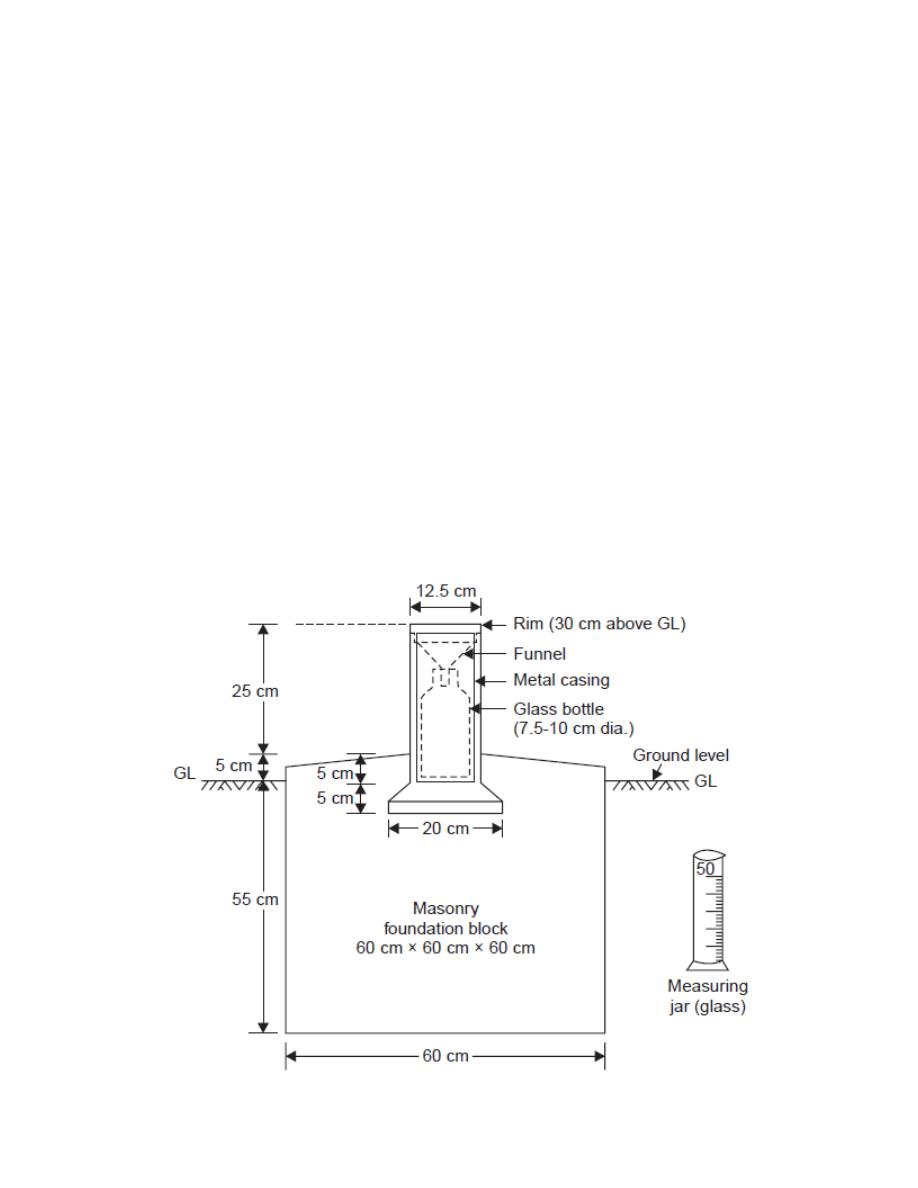
11
1. Non-recording rain gage (Symon’s rain gauge)
The non-recording rain gauge is used the Symon’s rain gauge (Fig.1). It
consists of a funnel with a circular rim of 12.7 cm diameter and a glass
bottle as a receiver. The cylindrical metal casing is fixed vertically to the
masonry foundation with the level rim 30.5 cm above the ground
surface. The rain falling into the funnel is collected in the receiver and is
measured in a special measuring glass graduated in mm of rainfall; when
full it can measure 1.25 cm of rain.
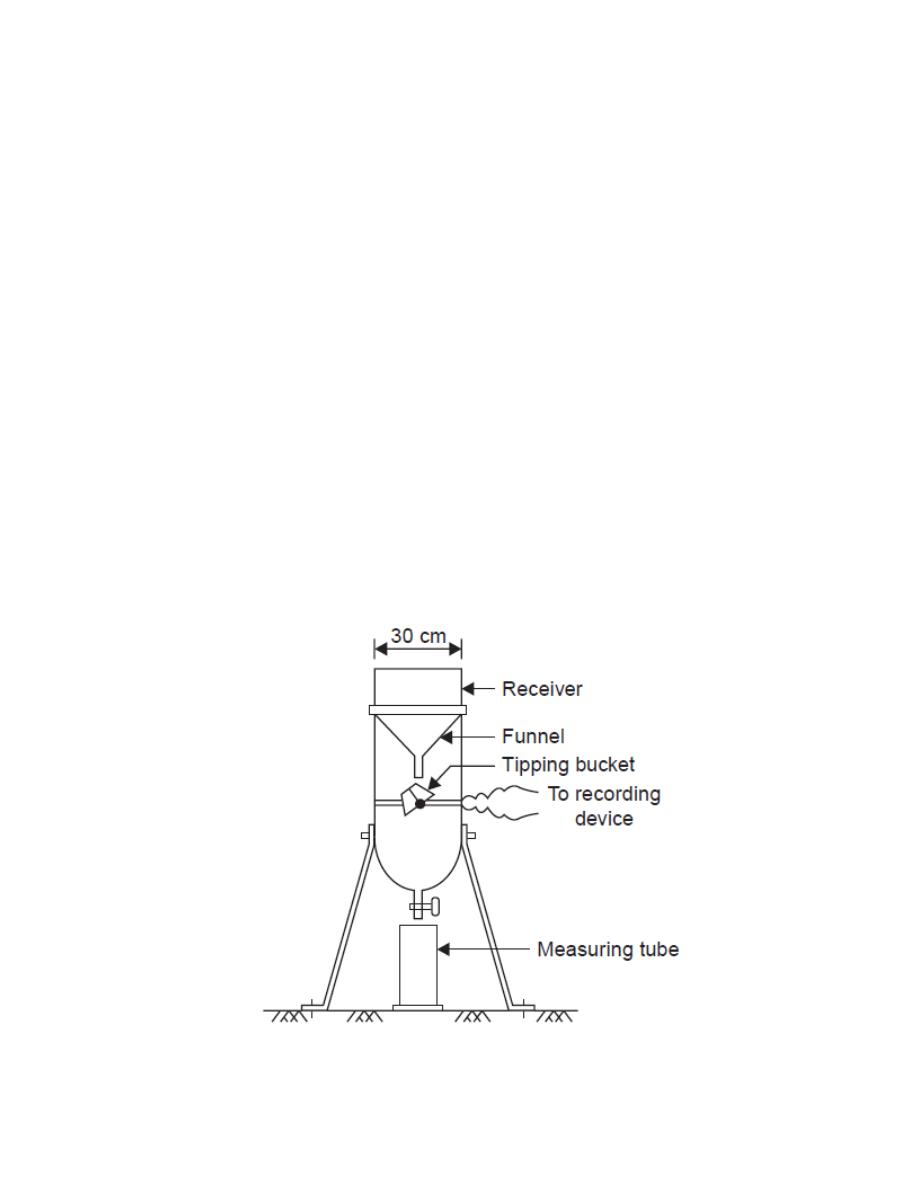
12
Fig.1
2. Recording rain gage
a. Tipping bucket rain gauge. This consists of a cylindrical receiver 30
cm diameter with a funnel inside (Fig. 2). Just below the funnel a pair of
tipping buckets is pivoted such that when one of the bucket receives a
rainfall of 0.25 mm it tips and empties into a tank below, while the other
bucket takes its position and the process is repeated. The tipping of the
bucket actuates on electric circuit which causes a pen to move on a chart
wrapped round a drum which revolves by a clock mechanism. This type
cannot record snow.
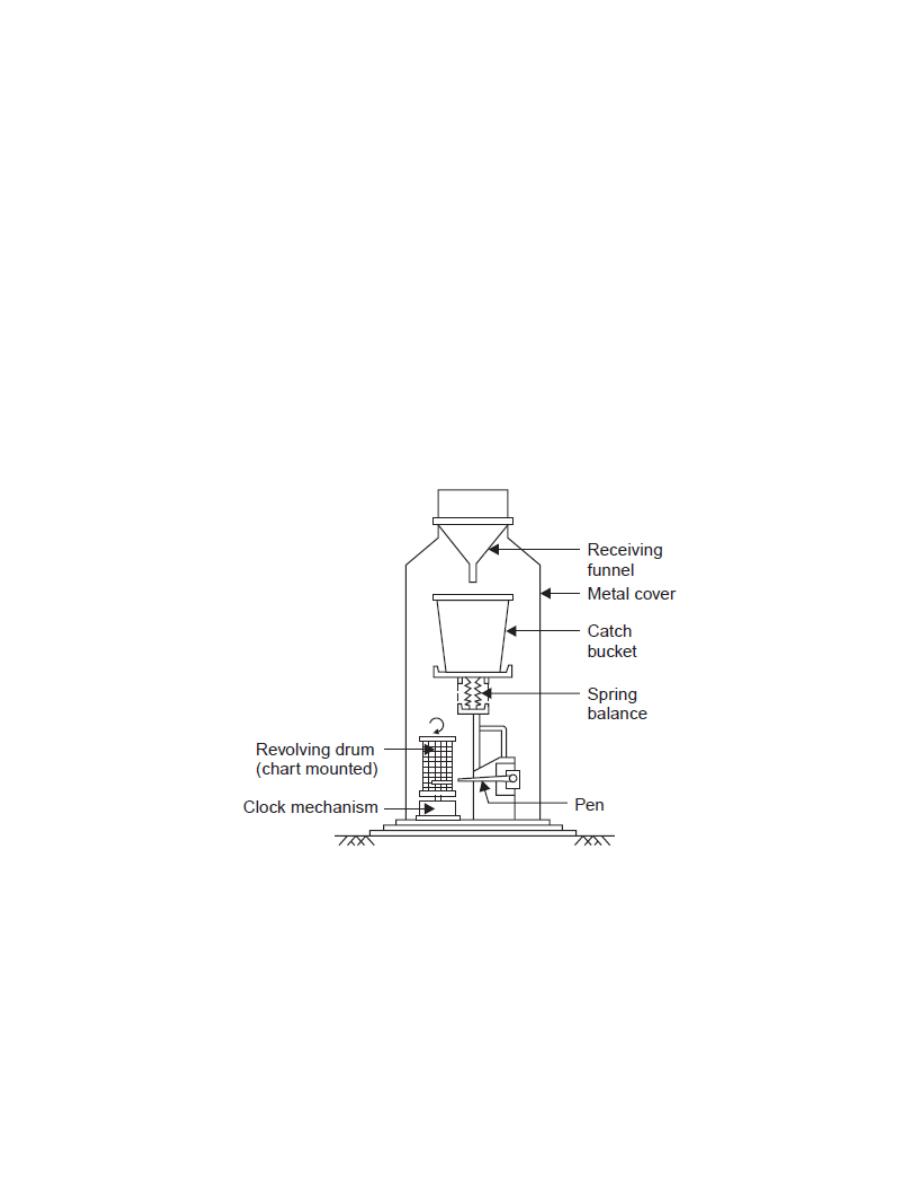
13
Fig. 2
b. Weighing type rain gauge. In this type of rain-gauge, when a certain
weight of rainfall is collected in a tank, which rests on a spring-lever
balance, it makes a pen to move on a chart wrapped round a clockdriven
drum (Fig. 3). The rotation of the drum sets the time scale while the
vertical motion of the pen records the cumulative precipitation.
Fig.3
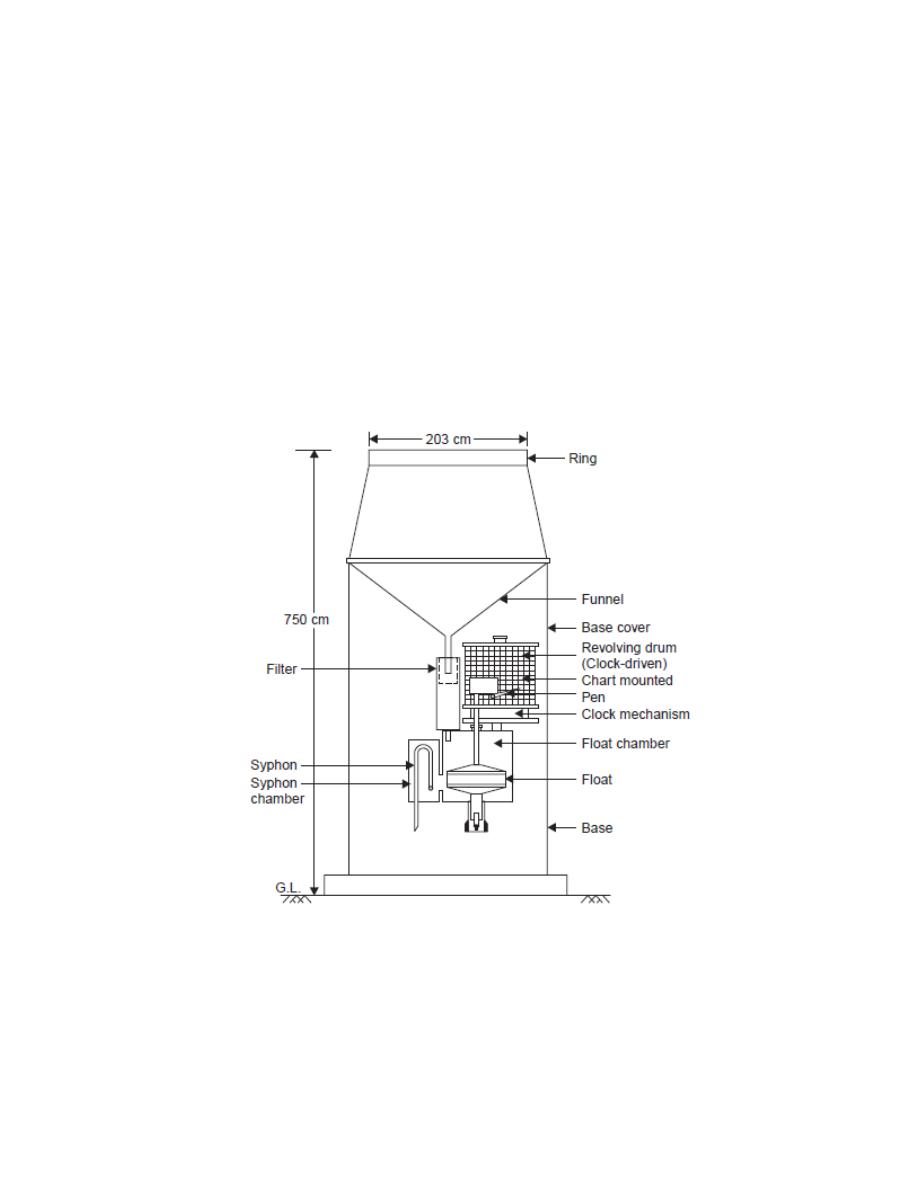
14
C. Float type rain gauge. In this type, as the rain is collected in a float
chamber, the float moves up which makes a pen to move on a chart
wrapped round a clock driven drum (Fig. 4). When the float chamber
fills up, the water siphons out automatically through a siphon tube kept
in an interconnected siphon chamber. The clockwork revolves the drum
once in 24 hours.
Fig.4
Search……….
Advantage and disadvantage of Recording Rain gage??????
